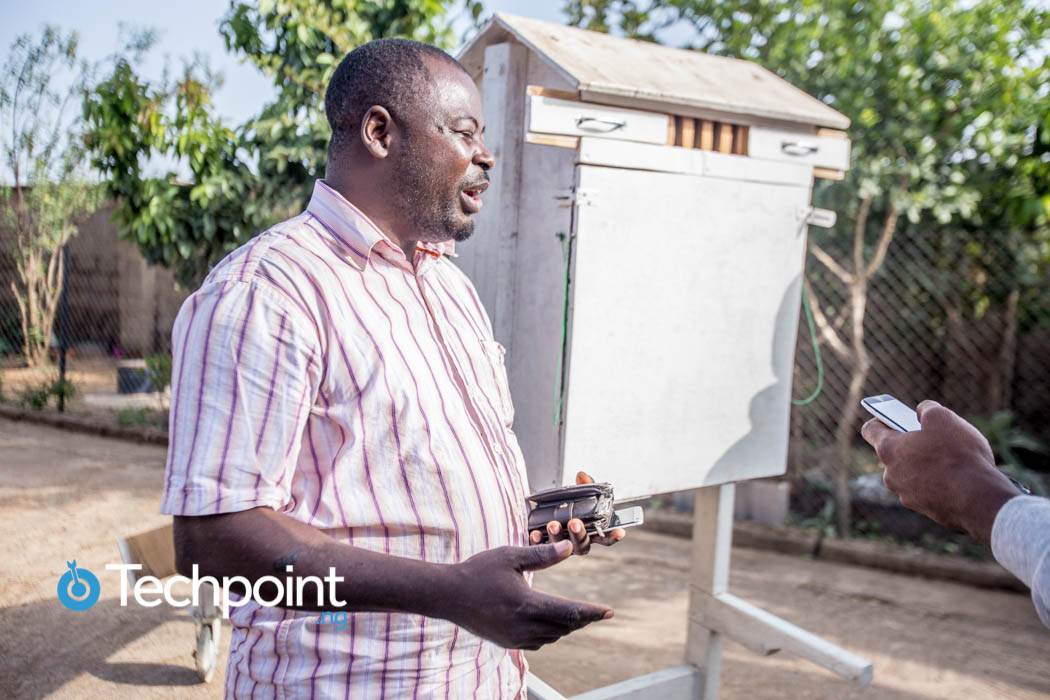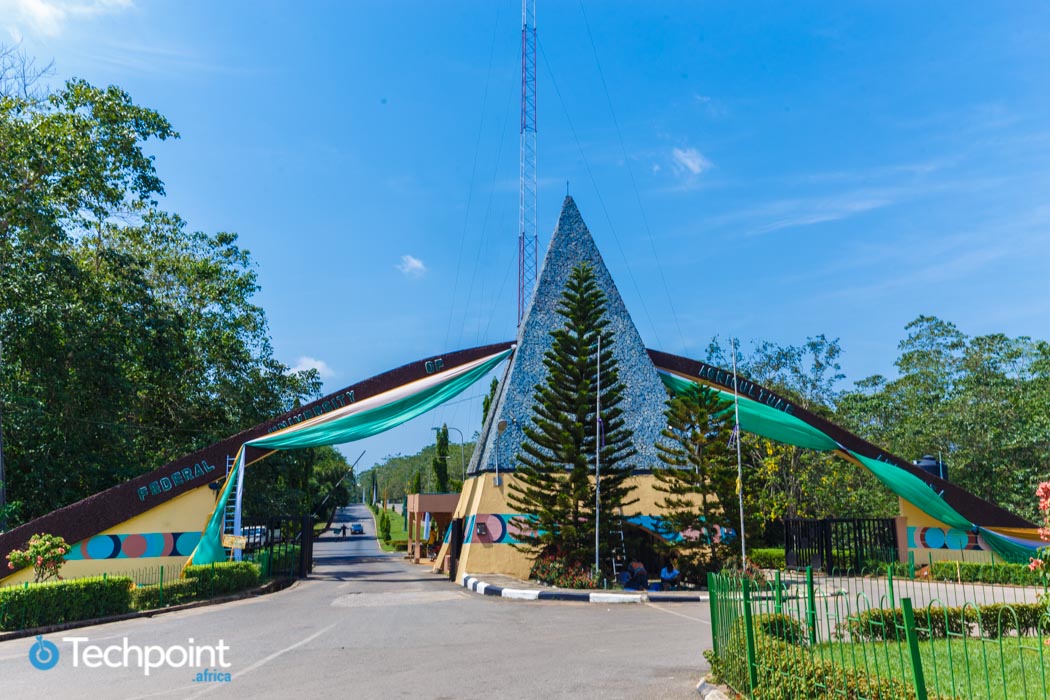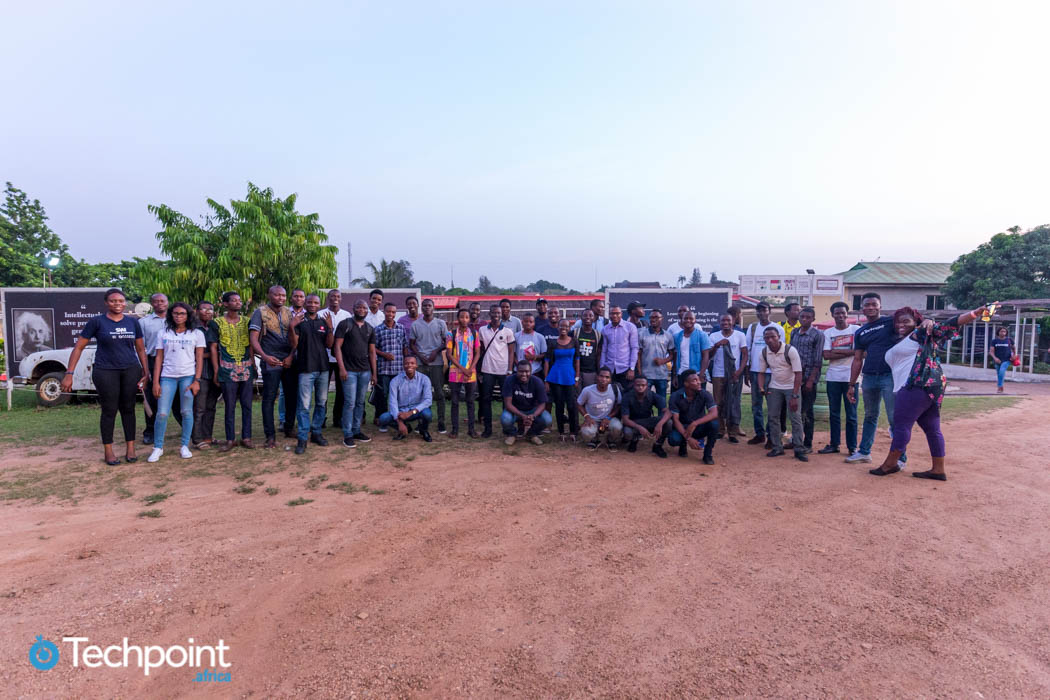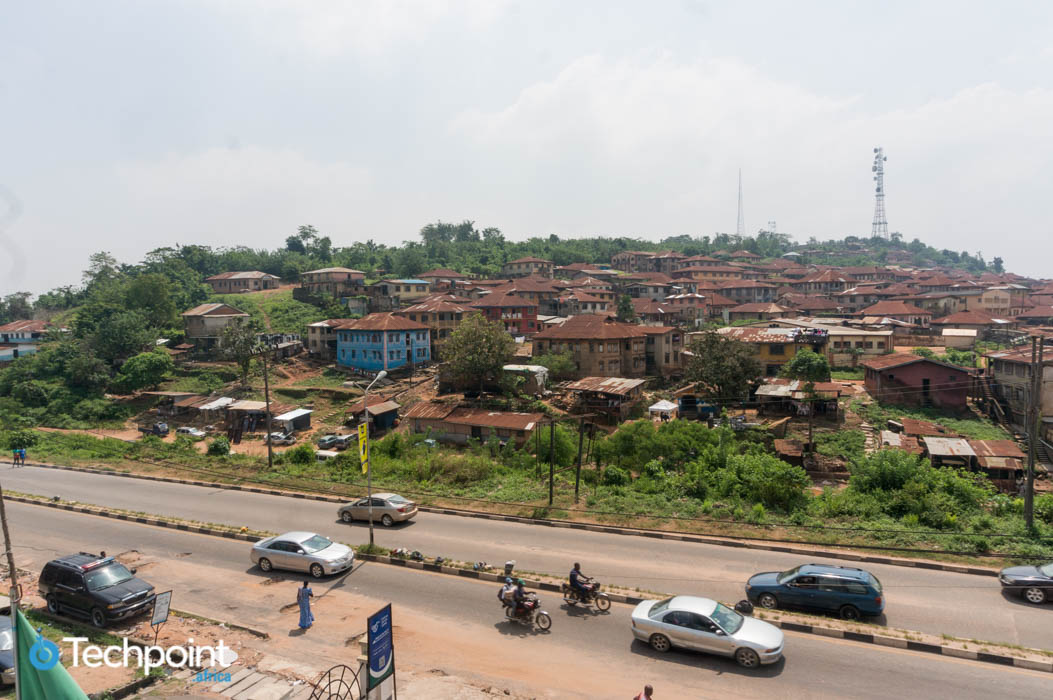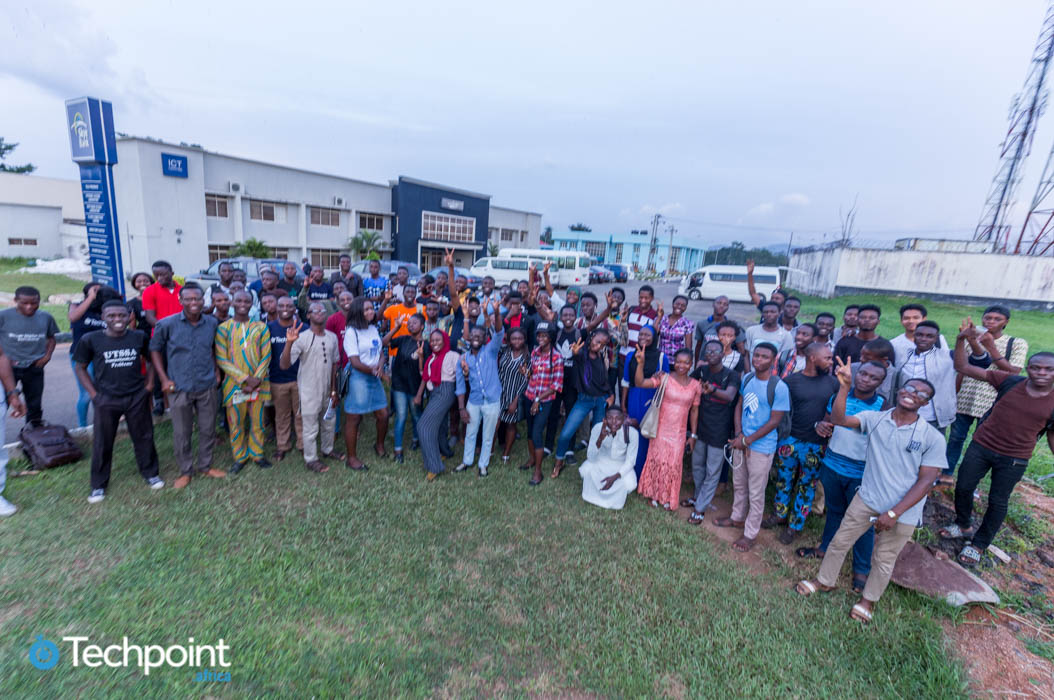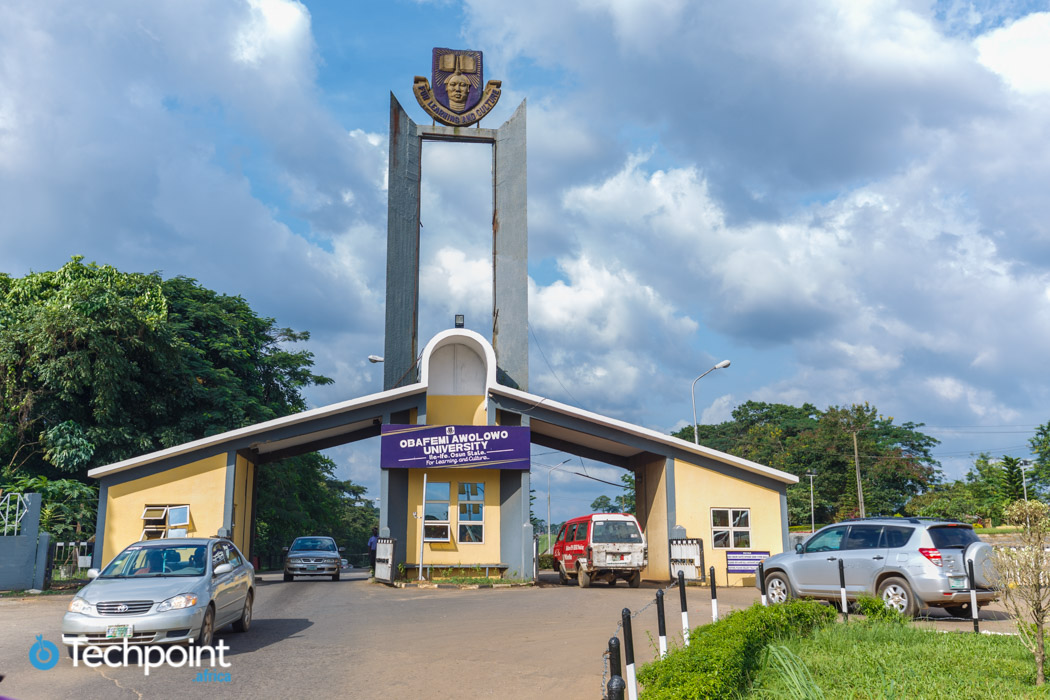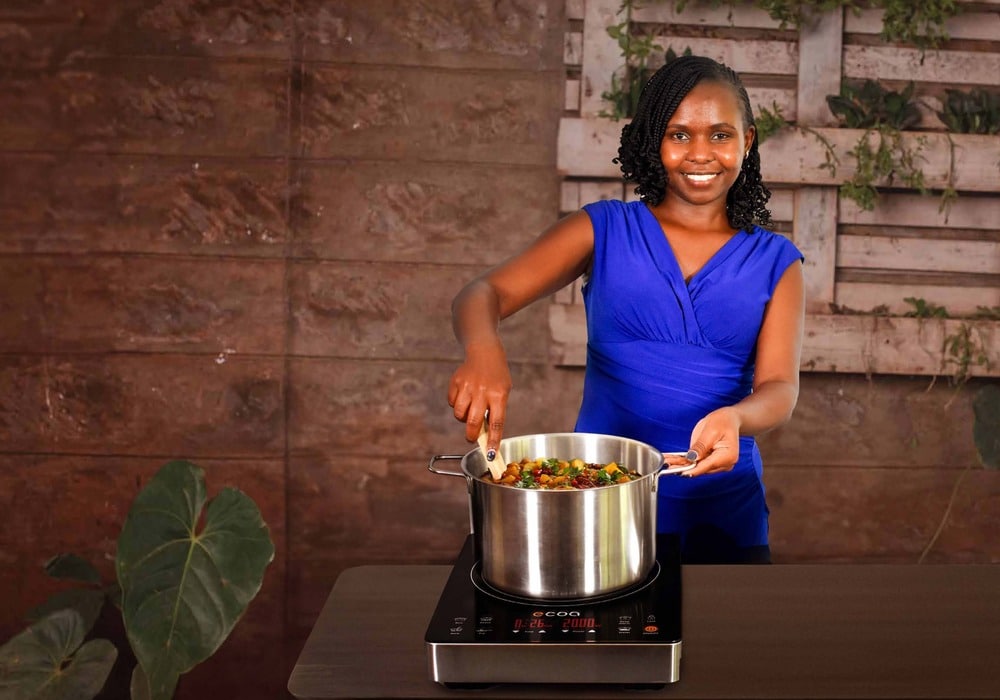Energy efficiency is the reduction of the amount of energy required to provide products, services and power machines. Energy efficiency saves energy costs and most importantly reduces the emission of Greenhouse gases that fill the atmosphere.
In Africa, open fire cooking and other heating methods that use fire are dangerous processes that damage both the environment and persons involved in the process.
In Jos during the Techpoint Innovation Tour, we met an engineer and entrepreneur who is innovating around energy efficient equipment. Some of the innovations we were able to see include a Solar Cabinet Dryer, Clean Efficient Institutional Woodstove, and a Smokeless Incinerator among other things.
All these were fabricated by Bols and Sels Technologies from locally sourced materials. Lannap Selbol, the CEO of Bols and Sels Nigeria Limited, is no stranger to innovation. As the lead engineer on a 55KW solar system that powers a whole filling station, he has built one of the largest solar systems in Abuja.
To enable us see some of these products in a natural environment, Selbol took us to a residential farm where they are already in use. Located in the suburbs of Jos, we drove a few dusty miles to get to the farm.
The surrounding terrain was hilly and rough. So at a non-accessible path in the road, the whole team and crew alighted and hiked the rest of the journey to the farm.
Clean Efficient Institutional Woodstove
The first innovation is an energy efficient 45-litre cooking pot with a fireplace built underneath; it is called the Clean Efficient Institutional Woodstove.
At first glance it looks like a normal cooking pot atop fire except this one has space for 1 piece of wood that facilitates the whole cooking process.
Commenting on its energy efficacy Selbol said;
I’m sure they are using more of corn husk than wood. Any form of biomass gives you fast cooking half the time of any open fire.
The wood stove uses one-third of wood that will normally cook the same quantity of food on an open fire, and most importantly, it does not emit any smoke.
Research has shown that there is a link between breathing in smoke and birth defects in women. Cooking with open fires is not restricted to the poor in Nigeria as jollof rice is considered top notch when it is made over wood fire. And apart from cooking food, most of these fires are used for industrial purposes, but with the cooking pot, smoke is reduced to its barest minimum.
For the first 2 to 3 minutes before the combustion chamber is properly heated, light smoke is let out through the air vent. Then after, the cooking process is entirely smokeless. This was evident in the 2-year old cooker’s vent that still looked new.
The normal size of the cooking pot is 45 litres but it can be built to around 60, 80 and 1200-litres, depending on clients’ request and specification. The bigger sized pots are usually requested by schools, churches and bigger institutions.
It used to cost ₦45,000 to make a unit of this cooking pot as all the materials used in its manufacture are locally sourced. But as prices of raw materials (and everything else) has increased recently, an energy-saving cooking pot now costs as much as ₦60,000.
According to Selbol, a semi-automated human chain of 4 workmen will build 5 units of this cooking pot in approximately 3 days. Somehow, this process can be fastened if it is fully automated but that requires capital.
Overall, the cooking pot is economically advantageous as it saves wood and fuel, reduces cooking time and is environmentally friendly.
Apart from cooking, there are ambitious plans for the Clean Efficient Institutional Woodstove; Bols and Sels Technologies hope to make a small unit of between 10 – 15 litres that fits into a regular kitchen. These smaller units will also be outfitted with the capability to convert heat energy to electric energy of up to 5 watts for charging mobile devices and rechargeable lights. So when cooking, devices can be charged at the same time.
Smokeless Incinerator
Whether waste is improperly disposed or incinerated, the environment takes a big hit. Incinerating disposed waste still aligns with the issue of firing things up, environmental hazard and a tendency to cause health hazards. There is the Smokeless Incinerator from Bols N Sels to address this problem.
Normal incinerators are usually open-ended and emit a bale of smoke, hence it’s hard to imagine an incinerator that does not terribly smoke. The smokeless incinerator is not entirely “smokeless” per se, just that compared to normal incinerators, it is a giant leap.
There are three vents, the top hatch for loading waste and fuel,
one at the side for ventilation,
and the last is a chimney of sorts top to let out smoke.
Like the Clean Efficient Institutional Woodstove, only a small douse of kerosene (or any fuel) is needed to get the incinerator burning.
Refractory bricks also known as fire bricks are major keys in keeping this particular incinerator energy efficient.
They are insulated bricks and, unlike normal clay bricks that have to first absorb heat before firing up, these refractory bricks have been preheated to a temperature where they become insulator of sorts. So they do not need to absorb heat in order to burn.
Solar Cabinet Dryer
Dehydrated food lasts longer as a reduction in moisture reduces spoilage. But when perishable foods are dried, there is a risk of nutrient loss as vitamins like the Vitamin A are light sensitive and decrease in value when exposed to direct light (sunlight). Vitamins B and C are no exception to this.
The Solar Cabinet Dryer is a 3 – 5kg capacity device that uses heat from the sun to dry food without directly exposing them to sunlight thereby stemming nutrient loss.
It dehydrates moringa leaves, pepper, ginger, garlic, other spices and vegetables and still retains most of their nutrients and flavour.
How it works
The dryer’s design is interesting and somewhat complicated, but I asked Selbol to geek out a bit. Sunlight is collected through a glass collector on the machine and converted to energy.
In elementary science, we learnt that hot air automatically rises because of its lightness. So the air that gets into the vents, at the base of the Solar Cabinet Dryer, automatically moves up and more air comes in to take its place. This process is repeated as it facilitates the drying process.
It is hard to keep control of devices that do not have knobs to fiddle with. The vents on the Solar Cabinet Dryer serve as a temperature regulator of sorts.
The vents acts as a check for the desired amount of sunlight onto the solar dryer; number of vents open depends on the amount of moisture in product.
These solar dryers completely eliminate the cost of fuel to dry produce. All still geared towards energy saving and economical efficiency.
Business in Jos and its Challenges
The equipment and paraphernalia we saw at the office show that work at Sels N Bols Technologies goes on steadily.
Lannap Selbol’s company looks to be doing well as they are solving a problem — helping people with efficient local alternatives to foreign products and saving the environment in the process.
According to Engr. Lannap Selbol,
What we do is to look at the local challenges of people and figure out how to fix them in an energy conservative manner with the locally sourced materials available.
He also talked about reinventing the wheel and making existing technologies affordable and sustainable. But every business must make profit to stay alive and keep doing what it does.
From the beginning of my conversation with Lannap, money seems to be the thread that connects all the challenges he is facing as an entrepreneur.
From advertising to being able to make more units and innovate on the wood stove, everything seemed to be a money problem. In rapper Jay Z’s words, Bols N Sels has 99 problems and money makes 97 of these problems.
In his own words;
Not to sound ungrateful, business has been good, but it could be better. Apart from finance, getting word about our business out has been one major challenge. We need radio, print, television advertisement to reach out to our potential customers, but we have not been able to get this because of a lack of funds. Most of the business we have gotten have been from referrals. This woman has brought two people and the chain continues from there.
People are generally skeptical about new products, especially those made in Nigeria. But Lannap says he gives customers up to a 4-year warranty and has not had cause to service any.
By the time we use locally-sourced alternatives to the necessary materials combined with the ones we cannot get locally, the finished products are usually stronger than foreign alternatives.
The Smokeless Incinerator costs around ₦200,000 and orders have been slow, compared to the rest of products on offer. I wondered aloud if the price was somehow tied to the rate of demand. Lannap said those that have gotten it have testified to getting their money’s worth. He insists instead that initial skepticism towards Nigerian products is a reason.
I had a video of the wood stove made and I feel this helped sell it easier and faster. Potential clients just watched the short video, got amazed and jumped on board. For the Solar Cabinet Dryer and Smokeless Incinerator, we had to speak more English and do a lot more convincing. Because the process involved in the working process of this two is long and slow, making a video was not feasible at the time
The videos and their resultant effect informed Lannap that Bols N Sels needed a voice. But for an entrepreneur in Jos without any funding, getting a voice is looking like an expensive venture.
On government backings, Bols and Sels ventures was once invited to submit a proposal to build equipment for a government facility. “We have not heard back from them ever since,” he said.
At this level of innovation, money is a necessary ingredient. But in the words of Engineer Lannap Newman Selbol CEO of Bols N Sels Technologies;
“As much as money is a major challenge, we really do not want to wait until we have ₦200 million, build a factory and run big. We want to start from somewhere and grow while still solving the problem of the everyday man, saving energy and the environment simultaneously while waiting for the big break”

